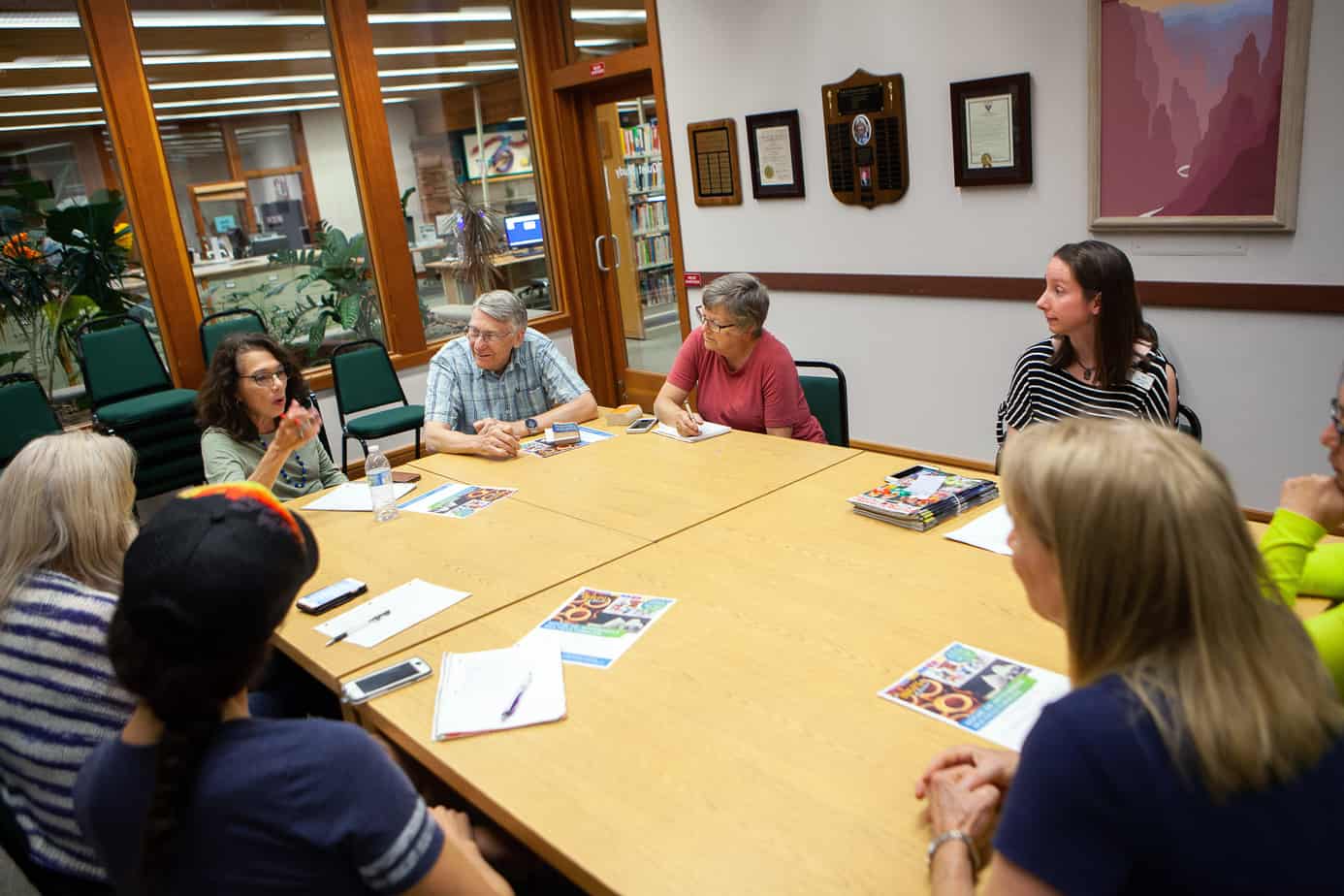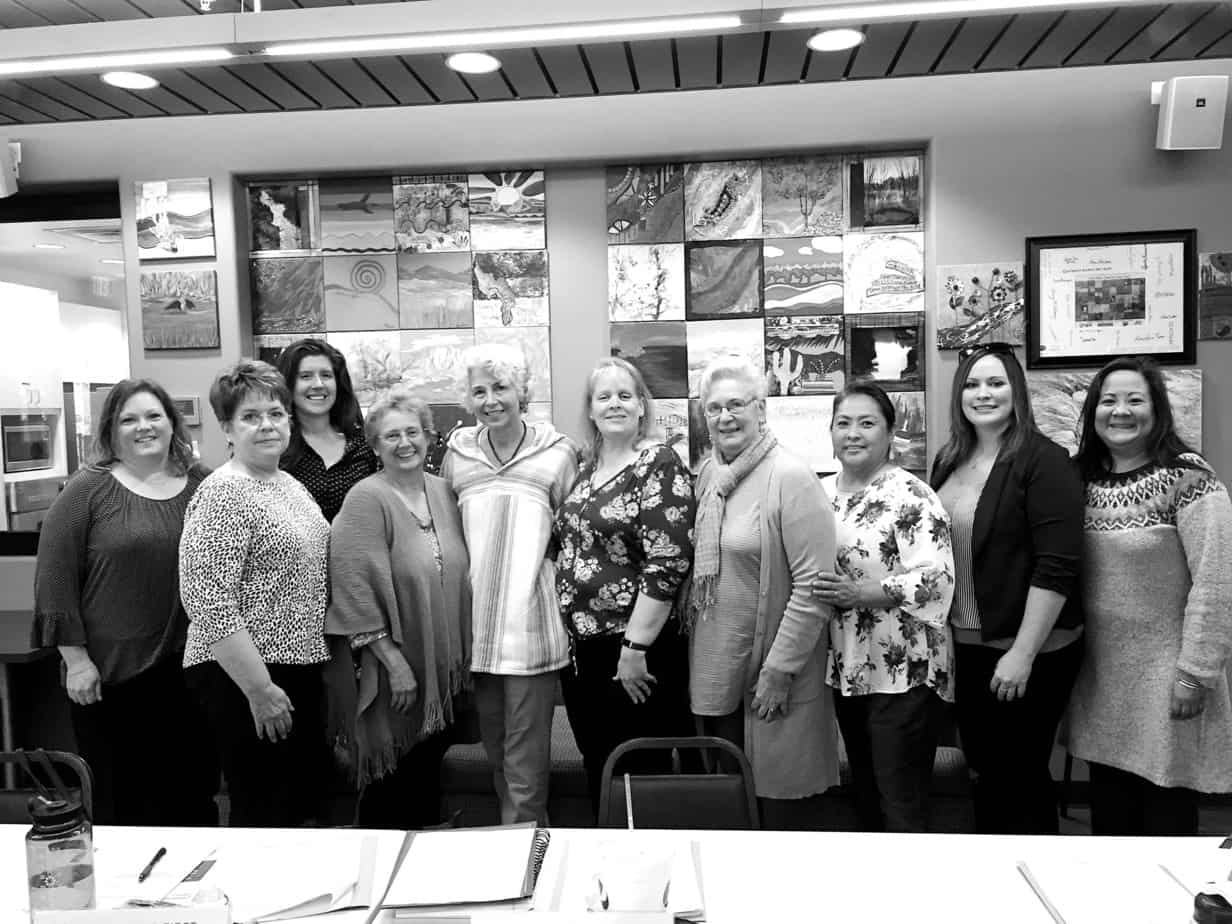If you walk in the Sedona Public Library on a Wednesday evening, English might not be the first language you hear. Depending on the time, it might be because the Conversational Spanish group is meeting or students are arriving for the English as a Second Language class and talking to each other in their native languages.
In 2003, the library opened the Latino Services position, hiring someone on a part-time basis to help build up the Spanish language collection with movies and books, as well as information on how to learn English and prepare for citizenship tests, library director Virginia Volkman said. That was part of a strategic initiative the library board established to serve the Latino community and incorporate those residents to the culture in Sedona, as well as encourage English-speakers to be comfortable speaking Spanish. The technical translations can be done with the right kind of translation services.
“We’ve off and on have had different programs that do both, not only serve the Latino community, but also bridge the culture gap between English speakers and Spanish speakers — whatever cultural bridge might have to be built so that people understand each other’s culture,” Volkman said.
During the past 16 years, the library has offered everything from guitar lessons to knitting classes in Spanish to be able to include people with different interests.
Since January, Maria Bernardi is doing the job, this time on a full time basis, and trying to expand the programs and offerings — as well as trying to catch up, because the position had been empty for three years before she came on board.
“When I got here I definitely saw that people needed an interpretative translation and the ESL teachers, they knew a little bit of Spanish but they needed someone to step in and translate or explain things more,” she said. Coming from a bilingual household, Bernardi was able to offer translation services for personal and professional needs.
Another important part of her job is growing and maintaining the Spanish collection.
“They didn’t have someone that could read and kind of know that background … someone who can understand the literature, so that was important. Because they already had this big collection and it wasn’t maintained so much,” Bernardi explained. “So when I came in we started working on taking some books out and then relabeling all the books and then buying a ton of books. We have over a 100 new books and DVDs as well, so we’re getting more steam, building it up.”
Although most of the people interested in the collection are those who have Spanish as their first language, she is also collecting material for those who want to learn the language; not only text books and dictionaries, but bilingual materials as well as easier reads, such as young adult and graphic novels.
“I’m always looking for how can I better serve English speakers that want to learn Spanish so I`m definitely trying to figure that out, but I think I know how to solve some of those issues,” she said, with a smile. And then there are the classes.
Conversational Spanish
The Conversational Spanish group meets every Wednesday at 6 p.m. in the Quiet Study room. Bernardi said the group is constantly getting new members, but there are also many who have been studying the language for many years and are glad to have a space to practice.
“They’re just so open and really committed. I loved hearing their life stories and how learning Spanish is so important to them,” she said. “I think they have a sense of adventure and it’s really practical for them. Some of them, they’re just surrounded by southwestern culture and a lot of interaction, so they go to adventures in Mexico, to Argentina and they love to explore. And I think they just really love the culture and the language.”
When I asked to talk to them, a few minutes after the meeting started, I offered the option of answering my questions in Spanish. They were a little shy at first, but accepted the suggestion, seeing as an opportunity to keep practicing. They laughed and joked around each other, showing their status as a group rather than individual people learning a language in one classroom.
“Yo vengo aquí para practicar al español porque aprendí hace muchos años y quiero practicar para no olvidarlo,” Sally Anaya- Boyer, the first to speak, said. “Y me gusta la gente que viene a este grupo, son muy amables y les gustan todas las cosas que tiene a ver con la cultura Latina y eso me gusta también.”
Anaya-Boyer explained she learned Spanish many years ago and attends the class to practice it so she doesn’t forget, adding she is fond of the other people in the group, who are all interested in Latin culture. Anaya-Boyer also said the group was created by Aileen Lee three years ago.
“Las gentes son originales de grupo, nuestro español es muy muy mejor que hasta tres años. Me gusta aprender la lengua extranjera porque me gusta las culturas diferentes y pienso que es muy importante de hablar la lengua del país si quiero comprender la cultura,” Lee said. She said she likes learning languages because it is important to know the language in order to understand a country’s culture. Pointing out that many of the members have been attending the group since the start, Lee also congratulated them for improving their Spanish.
Newcomer Shanta Paudel, who had come for the first time, said she works at the school with young children and many of them only speak Spanish, so she wants to be able to understand them.
Janice Goimarac said she was learning because she wanted to be able to communicate with Mexican women in her church who don’t speak English, especially because there isn’t anyone else from the church who can speak Spanish. Judy and Ken Nelson shared they like traveling to different countries, including Mexico, where they have friends.
“Es mi raison d’être,” Judy Nelson joked in Spanish and French.
English as a Second Language
Someone who has a similar life purpose is Gail Basham, who has been teaching ESL voluntarily for around nine years. A teacher in the Sedona-Oak Creek School District for 24 years, she encountered an increasing number Spanish speaking students over the years, which led to a need to learn the language to communicate not only with them but with parents.
“I did it partly because I had students and the students needed someone able to speak for them, with administration, with the public, with their parents. So that was one of the ways that I could advocate for the kids,” Basham said.
Later, she worked teaching English as a second language for the district. Knowing her credentials, the library asked her to teach the class when the former teacher left. She said yes and hasn’t stopped ever since — literally, the class takes very few breaks over the year, only during holidays and times the library is closed.
Most attendees are Spanish speakers first, but people come from a variety of places and educational backgrounds. More than learning to speak the language, she said what they need is confidence to do it, something Basham knows is hard from personal experience.
“Because I didn’t start learning Spanish until I was an adult, I have an understanding of how difficult that is, all the psychological part that goes behind it, all the insecurities,” she said. “We’re a real safe group … it’s easy for them to come in and practice their English. That’s one of the goals for it, it’s to make it a place that people feels comfortable, that they want to come.”
Another important aspect is there is no set curriculum because the students come when they want and if they can. Some come back for months, others just take a couple classes. The many languages spoken create some difficulties, but also open space for creativity to flow.
Moreover, Basham now has the help of Bernardi and Shanandoah Sterling, a volunteer who is getting her teaching certification. That way, they can work in smaller groups or even individually with attendees, giving more personalized attention.
“Everybody’s at a different level, so sometimes it’s working with one student a little bit one on one while the students are doing things. We do things in a group and then we do things separately and individually as well,” Sterling said. “We try to give something that hits everybody’s level, so that they have that ability to be a part of it.”
The focus on their needs is also translated on the topics discussed — cultural practices ranging from food to driving laws and whatever needs students have. Learning how insurance works? Covered.
Translating car parts so they know what needs to be repaired? Check.
“Usually when someone new comes in, we try to figure out very quickly where they are, what their level is and you can do that just by asking them questions,” Basham said. “It’s their class … they want to be able to communicate with other people orally, but they’re also interested in a little bit of the reading and writing, so we try to do a little bit of everything each week and we gear it towards [their interests].” For Sterling, the best part of the job is seeing students gain confidence.
“Probably some of the biggest things that I find [rewarding] is to watch them become open and laugh, start to feel more confident in their reading and how they speak. And the other thing is to see them comprehend and grasp, ‘oh, that’s what a contraction means, cannot is can’t,’ they get that,” she said.
“The goal is to take you from wherever you are and help you move on. If all you need is two months and you feel like, ‘OK, I’m confident, I’m feeling more confident’ — then move on,” Basham said. “As much as anything, we try to build confidence.”
The Conversational Spanish group meets every Wednesday at 6 p.m. and the ESL class takes place Wednesdays at 6:30 p.m. Everyone is welcome – but if you are not quite ready, the library also holds events that will give you a chance to experience different cultures.
On Wednesday, July 10, Bernardi is hosting Multicultural Craft Night, which both classes will attend. The event runs from 6 to 8 p.m., is open for all ages and will include red clay air-dry pottery, papel picado, aromatherapy





















